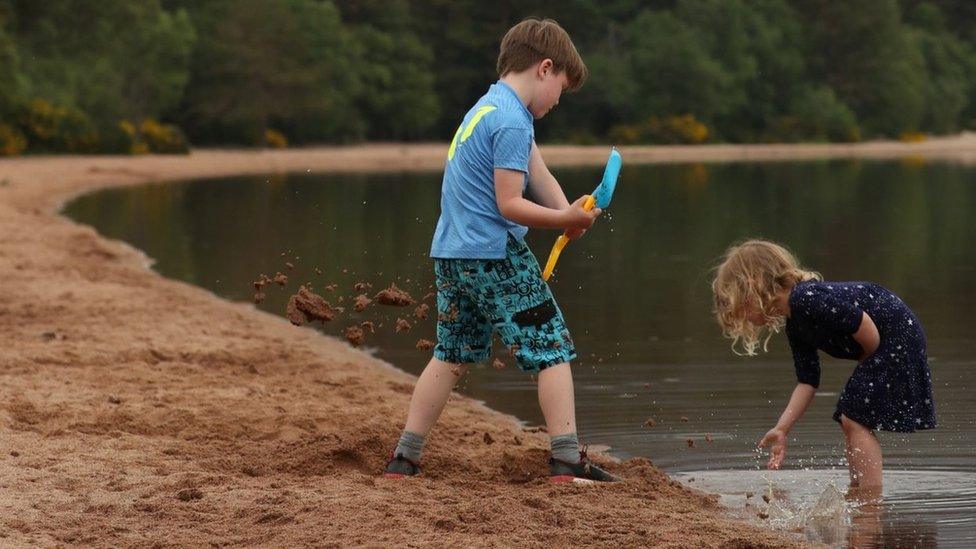Coronavirus: Distancing rules relaxed for children in Scotland
- Published

Younger children will no longer have to follow distancing rules when meeting other children or adults outdoors in Scotland.
First Minister Nicola Sturgeon said the change in guidance for those under the age of 12 would be introduced from Friday.
Children aged between 12 and 17 will still need to obey distancing rules.
But there will no be no limit on the number of different groups of people they can meet during a day.
The first minister said she hoped the changes would make life "a little bit easier and a little bit more fun" for children over the summer holidays.
Children in both age groups will still be restricted to meeting outside in groups of up to eight people from no more than three households.
Ms Sturgeon said that removing the requirement for those aged under 12 to physically distance from each other would allow them to "play normally with your friends".
She said that children aged between 12 and 17 wanted to "have your own lives and meet your own friends".
The changes will allow them to meet as many groups of friends as they want at different times of the day.
Coronavirus: Kids and teenagers - what are the new rules?
"It also means that you won't be prevented from meeting your friends just because your parents or carer, or your brother or sister, happens to be meeting their friends," she said.
However, the first minister stressed that older children were still being asked to continue observing the 2m social distancing rule.
Ms Sturgeon said on Thursday that the general advice remained that people should remain 2m away from other households.
It will be possible for the rule to be relaxed by some businesses - such as pubs and restaurants - if other safety measures have been introduced.
These exemptions will be allowed after Scotland enters the third phase of its route map for easing the lockdown.
The Scottish government is also making it compulsory for people to wear face coverings in shops from 9 July.

RISK AT WORK: How exposed is your job?
EXERCISE: What are the guidelines on getting out?
THE R NUMBER: What it means and why it matters
RECOVERY: How long does it take to get better?
